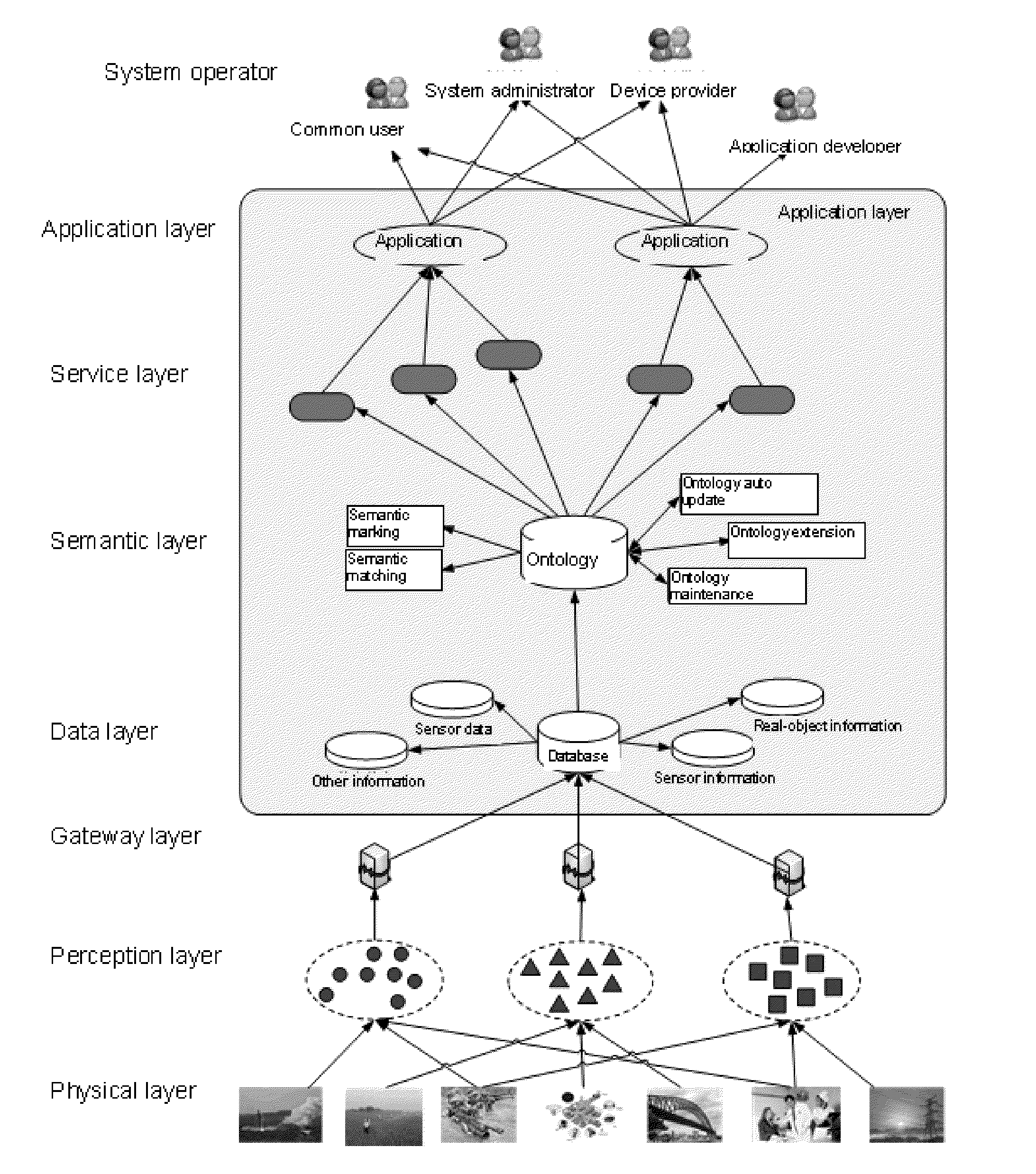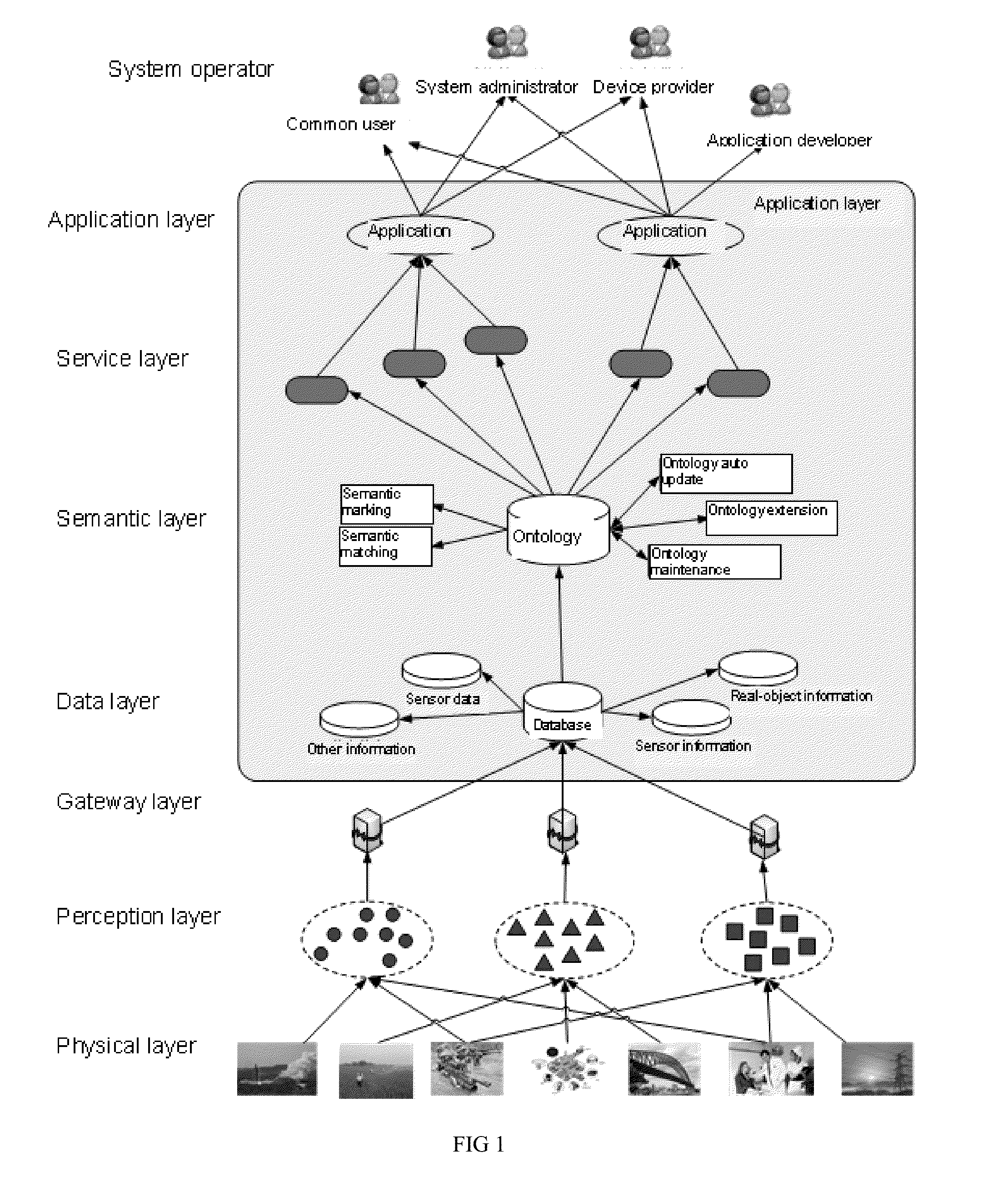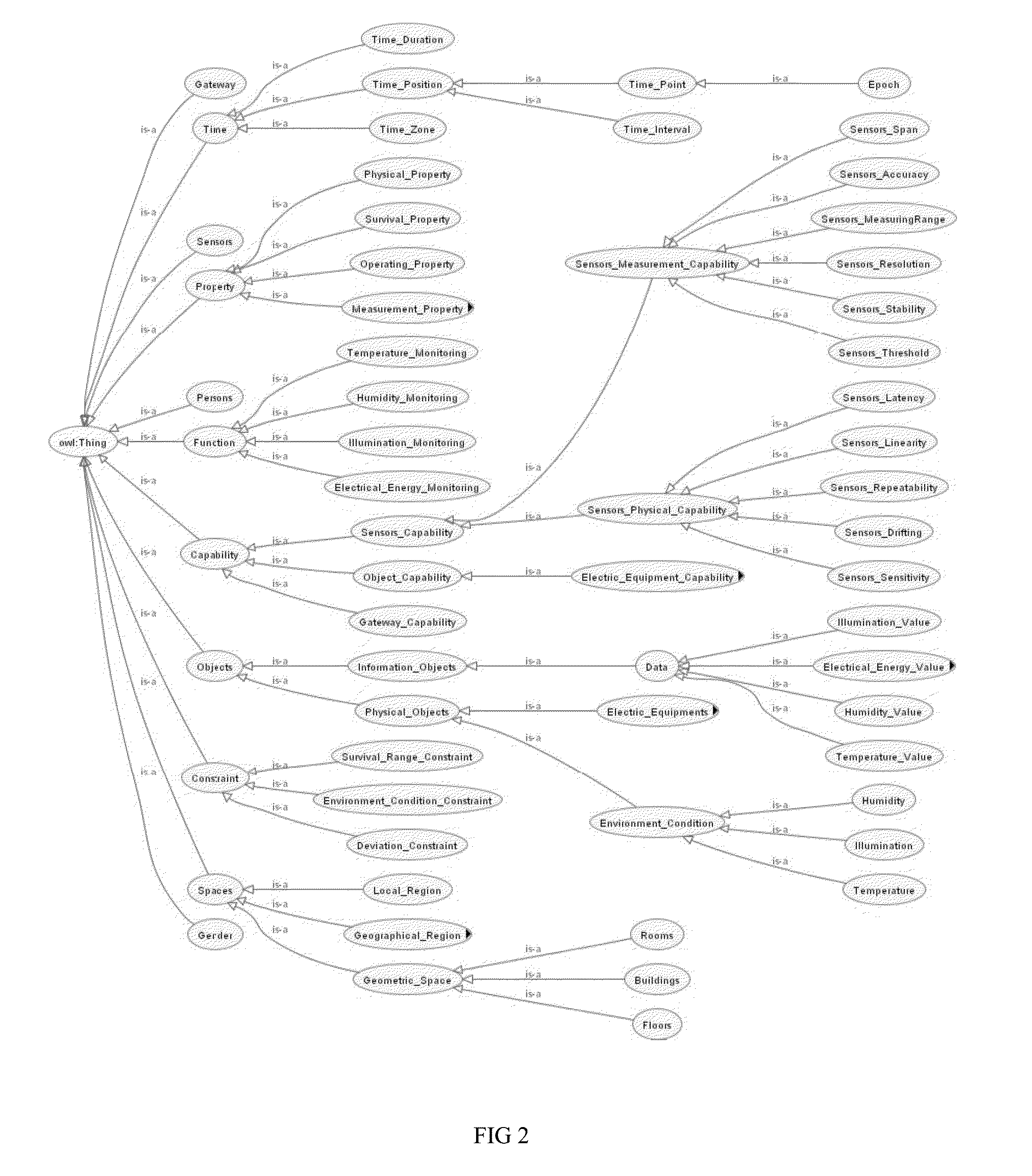A semantics-based architectural model of the internet of things
a technology of semantics and internet of things, applied in the direction of programme control, machine-to-machine/machine-type communication service, instruments, etc., can solve the problems of poor interoperability between sensors, lack of semantic properties that cannot be understood by computers and sensors, and difficulty in interconnecting networks of different fields. achieve the effect of improving the interoperability of resources and effective sharing
- Summary
- Abstract
- Description
- Claims
- Application Information
AI Technical Summary
Benefits of technology
Problems solved by technology
Method used
Image
Examples
Embodiment Construction
[0029]The present invention is further detailed in combination with the drawings below.
[0030]As shown in FIG. 1, by means of semantic processing of data, the present invention will enhance the expression ability of data, realize effective sharing, reuse, integration and access to data, improve the interoperability of resources, and realize intellectualized service. The architectural layers are specifically as follows:
[0031]The physical layer: this layer, including all entities to be perceived, is the provider of data sources and used to provide perception and operation objects to services and applications;
[0032]The perception layer, this layer, including the devices perceiving entities, is the acquirer of data sources and used to monitor the perception entities, collect data of entities, and perform preliminary data processing. The devices in this layer mainly include a temperature sensor, a humidity sensor, an illumination sensor, and an electricity sensor. Wherein, the temperature...
PUM
 Login to View More
Login to View More Abstract
Description
Claims
Application Information
 Login to View More
Login to View More - R&D
- Intellectual Property
- Life Sciences
- Materials
- Tech Scout
- Unparalleled Data Quality
- Higher Quality Content
- 60% Fewer Hallucinations
Browse by: Latest US Patents, China's latest patents, Technical Efficacy Thesaurus, Application Domain, Technology Topic, Popular Technical Reports.
© 2025 PatSnap. All rights reserved.Legal|Privacy policy|Modern Slavery Act Transparency Statement|Sitemap|About US| Contact US: help@patsnap.com



